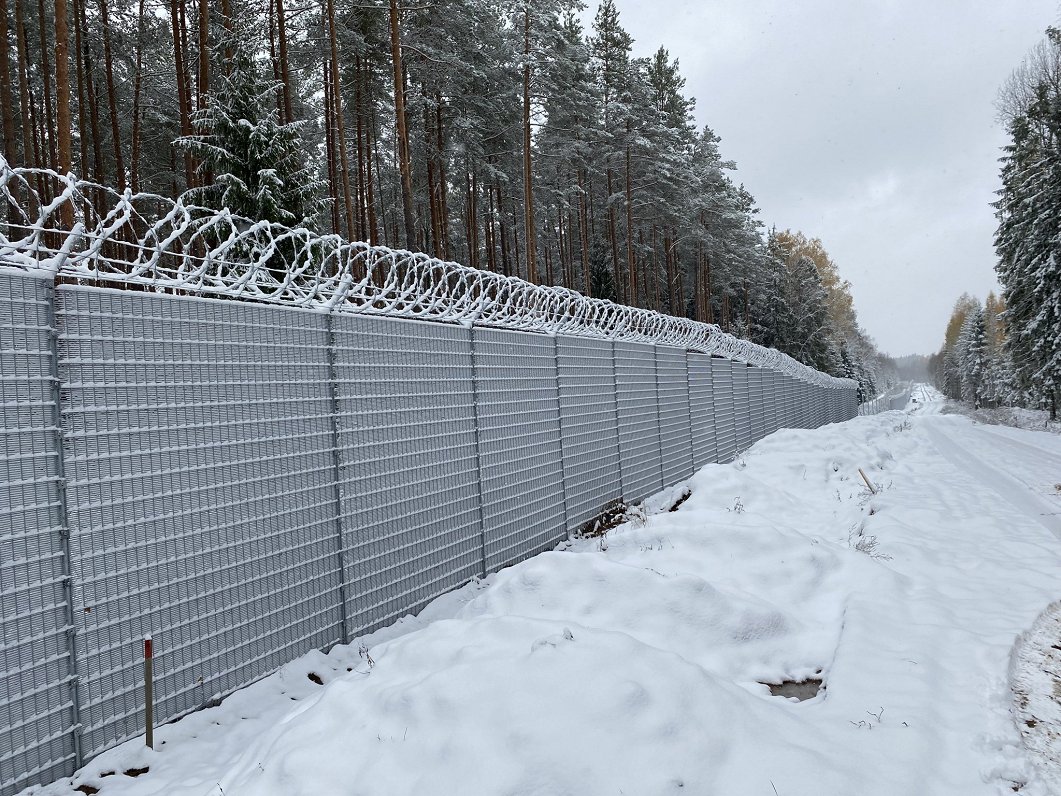But the beauty of this often forgotten corner of the country is deceptive: the area close to the eastern border with authoritarian-ruled Belarus has become a hotspot this year when Latvia had to deal with an increased number of third-country migrant groups at its external EU and NATO border.
Originating from Iraq, Syria, Afghanistan and other troubled regions, most of the migrants were deliberately and systematically sent at Minsk's behest in order to put pressure on the West and generate political tensions in retaliation for EU sanctions.
Because of the illegal migrant influx, Latvia has strengthened the protection of its 172 kilometer-long border with Belarus and accelerated the building of a fence along the previously only lightly protected land sections. Work is making progress and the construction of the physical barrier has been completed. Latvia will now continue to fortify and secure the border on sections along public waters where a fence, access roads and patrol trails will be built. The fencing of the entire eastern border with Belarus and Russia is expected to be completed by the beginning of 2025. Then the next phase with the installation of video cameras, sensors systems and other equipment is about to start.
Together with journalists and film teams from Swiss and German public broadcasters, LSM recently was twice at a border section near Silene to check out the situation at the Latvian-Belarusian border and the progress of ramping up the external security infrastructure. Both times the media crews were asked to enter official border guard service vehicles since it is not allowed to drive in your own car to the border fence. It is a restricted zone.
“You have to get a special permit to enter the area stretching two kilometres inland from the border line“, explained border guard Vladimirs Šersts, adding that the regulation is part of a reinforced regime of border surveillance.
Entering the borderland area
When driving with Šersts and his colleagues in their SUVs on snowy, slippery roads through fields and forests the Latvian border officials initially appear taciturn. No wonder: times are challenging and tense. But little by little they open up during the guided tours and tell more about their daily work and the situation at the border, even though they still were paying attention to every single word they say to their international visitors that were accompanying them on a patrol along the border to Belarus, which backed Russia in its invasion of Ukraine and under the leadership of Alexander Lukaschenko is a close ally of the Kremlin.
What used to be an ordinary duty has now has become more than just a routine job and is carried out according to special risk analysis. “Everything depends on the situation“, Šersts said without going into detail about how often the border guards are patrolling and how many people involved in it.
”We are patrolling if we have some incidents and we are patrolling if we do not have any.“ More the chief inspector at the Border Control and Immigration Control Service unit is not willing and probably also not allowed to say. He remained tight-lipped when it comes to details about the border guard operations at the border.
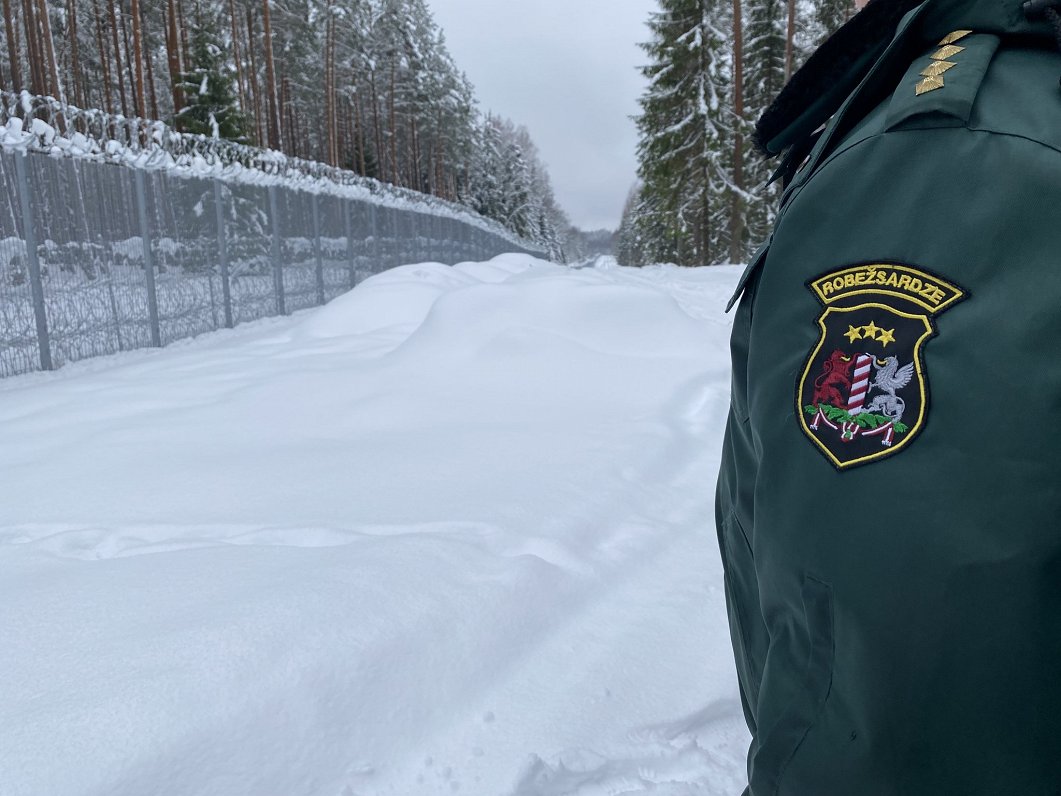
After a good 15-minute ride from the border guard outpost in Silene through snowy mainly state owned forests that seem to be a paradise for wild animals and – under usual circumstances – also for local mushroom and berry pickers, we arrived at the demarcation line. At which section exactly, Šersts and his colleague are only reluctantly willing to share due to security concerns. A quick look on the mobile phone would reveal the location but the border guards advise to switch it off or at least turn on the airplane mode. Otherwise data from the phone might be recorded and read out by the Belarusian side, they warned, indicating that cyber and information warfare has become another major challenge in the border area and daily reality for the border guards.
Having reached the final destination and gotten out of the car, Šersts is now pointing towards the erected barrier. “You can see here the final permanent fence, but behind it you can see the temporary fence. It is like the first line of security,” he explained.
The multi-layered rolls of barbed wire were laid out as a quick solution at multiple border sections after in 2021 the situation at the EU's external border drastically escalated when thousands of people tried to enter the European Union illegally from Belarus after being directed in the vicinity of the Lithuanian, Polish, and Latvian borders.
Hybrid attack from unfriendly neighbors
While Latvia was initially less affected then Poland and Lithuania, the situation changed in 2023. In late summer and autumn, the Latvian border guards registered record numbers of migrants, while the number of illegal border crossing attempts has fallen sharply in the two other countries. One reason for this is the permanent fence that has been already erected along their borders, whereas Latvia is still in the process of building one because the construction has been delayed for several years. This has made Latvia a potential weak spot of the region and the current forefront of the migration crisis at the EU's Eastern border, along with Finland that recently has registered a sharp increase of undocumented migrants arriving at their border with Russia.
In 2023, almost 14,000 attempts to illegally enter Latvia from the territory of Belarus have been prevented – more than twice as many as the year before. Up to 250 illegal border crossings have been registered on certain days, according to Šersts. In earlier times not many attempts would be recorded at this Silene border guard station each year. Cigarette and alcohol smuggling used to be a much bigger problem in the region, where unemployment is high and wages are low. But this basically is now a thing of the past: the increased surveillance system has made the border almost impenetrable for smugglers.
Given the colder temperatures and snow in December, the number of attempted illegal border crossings has dropped significantly over the past month. There have even been periods when no such attempts have been recorded for several days in a row. But Latvian officials emphasize that this might be only a break and warn that it would be wrong to assume that everything is over.
“It is difficult to predict when the hybrid attack from unfriendly neighbours might resume, so Latvia is maintaining a reinforced regime of border surveillance," Interior Minister Rihards Kozlovskis stressed in late December.
Latvia initially declared a migration-related state of emergency that has been extended several times and reinforced border surveillance in the administrative territories bordering Belarus. To be able to deploy more personnel to monitor and protect the border, in mid-September the government decided to close the Silene checkpoint – one of the two border crossings with Belarus – until further notice.
The border guards have received additional support from the national armed forces and the state police, and in a show of regional support were also helped by their colleagues from Lithuania and Estonia that dispatched units to the Latvian-Belarusian border.
Preventing illegal entries – or pushbacks?
Latvia's border guard have also gained the power to send back migrants who enter the country illegally from Belarus. In summer 2023, the Latvian parliament passed controversial regulations legalizing the turning away of migrants that have crossed the border during emergency conditions declared by the government.
Formalizing a practice actually in place since summer 2021, border guards are now officially authorized to “prevent a person from entering the country at a place and time not intended for, if there are no objectively justified circumstances for the immediate need for entry”, according to the amended State Border Guard Law.
The measures border guards may take include the right to use physical force or the threat of force if other means of preventing border crossings at unauthorized points and of the illegal entry into the country fail – a practice that refugee rights organizations strongly criticize and have labelled as “push-backs.“
Asked what the border guards do when they encounter migrants that are trying to illegally cross the border, Šersts explained that they are stopped and informed that they are not allowed to enter Latvia and should return to their country of departure.
Most of them then voluntarily retreat by turning around and going back to Belarus, according to the border officer. Only in “very, very rare cases” the migrants have reacted violently during stand-offs at the border. Šersts continued to explain that especially now in winter times it is investigated whether the often exhausted, tired and half-frozen migrants carrying only small bags and backpacks need medical help. If this is the case, the border guards will call an ambulance unit that then examines their physical condition. Depending on the results of the medical report, an immediate decision will be made.
“If this person is a vulnerable person, we detain them due to humanitarian reasons and take them to our Centre for Detained Foreigners in Daugavpils“, Šersts said. In 2023, more than 400 people were admitted to Latvia for humanitarian reasons.
All other border crossers that are not in need of medical support will be sent back to their country of departure – without identifying them or registering their personal data. The goal is simply to deter and prevent them from entering the territory of the Latvia and the EU in a move to resolutely demonstrate to Belarus that sending migrants to cross the border at unauthorised places is pointless. Poland and Lithuania have been acting the same to stem the tide of migrants.
A geopolitical battle at the border
Refugee advocates have been very critical of the law changes and the practices used at the border that in their opinion legitimize measures that limit or even suspend the right of foreigners to apply for asylum in Latvia. The non-governmental organization“I want to help refugees” (Gribu palīdzēt bēgļiem) points out that the procedure violates international law and places persons in need of international protection at serious risk of ill-treatment.
According to project coordinator Ieva Raubiško migrants are often stranded in dire conditions without food and basic necessities in the borderland. Especially in winter times the migrants are in a desperate situation because of the cold and their deteriorating health.
While the Latvian border guards prevent migrants from crossing the green border, the Belarusian authorities hinder them from returning to Minsk or other cities in Belarus and direct them back to Latvia, Raubiško told LSM, adding that this makes it practically impossible for migrants to reach official border crossing points where they could ask for asylum.
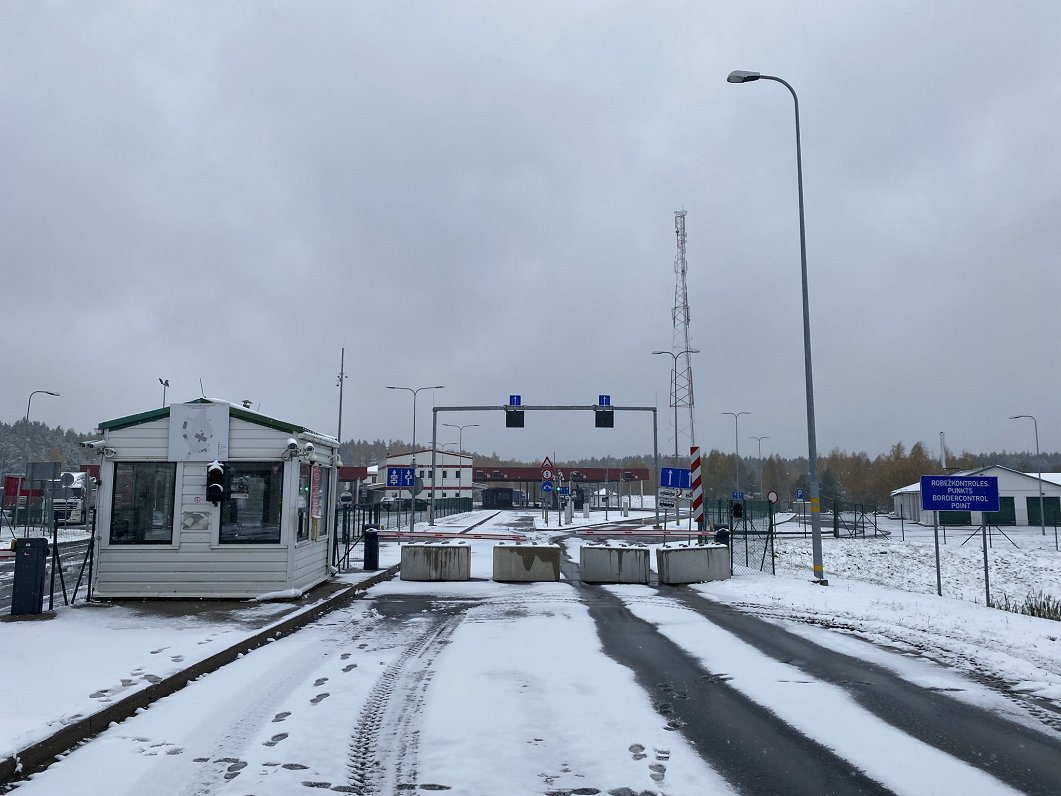
In addition, many of them also do not possess the necessary personal identity documents any more since they were taken away from them by people smugglers or Belarusian border guards that pushed them towards the EU border, making them part of a broader geopolitical battle. There have been also reports about cruel treatment and violence against the migrants on both sides of the borders.
Starting in 2021, Belarus eased visa requirements for “tourists” from the Middle East and encouraged charter flights to Minsk only to shuttle them to the border with Latvia and leave them with no alternative but trying to cross it. But now, since the second half of 2022, most people enter Belarus through Russia.
“It is basically just a different route, but the same shuttle bus”, Igors Rajevs, the parliamentary secretary of the Ministry of the Interior, told LSM. But why then are the migrants now not simply transported to the Russian border with Latvia? Rajevs assumes that Moscow wants to keep the pressure on Minsk and leave the migration crisis apparently an issue between Belarus and Latvia or the EU, while staying in the shadow – at least for the moment.
Whatever the motivation and underlying reasons for the redirection of the migration flow might be, nothing has really changed for the migrants themselves. Being trapped between Belarus and Latvia, many migrants can not get out of the borderland, even if they want to, according to the refugee rights advocate Raubiško.
Most of them are not well equipped for staying out in the forest and swamps in winter conditions, and even with appropriate clothing it will become threatening to their health, life and safety after several days in the cold with no shelter or only rudimentary set-ups.
There have already been reports about several deaths but they are just the tip of the iceberg, Raubiško indicated, adding that the exact number is unknown.
While the authorities release precise daily statistics on attempts to illegally enter Latvia from Belarus, there are is neither data published or available about deaths at the border, nor about people reported missing. Raubiško has received information about other victims and deaths but they cannot be verified. Due to the reinforced border surveillance regime, access to the border areas is “very limited, even non-existent“, she said, adding that this does not allow for independent monitoring either by NGOs or the media. None of them can thus track the full extent of the migration problem that is dealt with measures at the margins of the law and the constitution.
How many are really trying to cross the border?
Raubiško further explains that official data is lacking. In her opinion the daily reported number of prevented border crossing attempts in the past 24 hours and the cumulative number since the beginning of the year are not giving an accurate picture of the number of people at the border. Since migrants are only turned back but not registered, some of them might have repeatedly tried to cross it even within a single day. Thus the statistics might show figures of partly the same people and not the total number of individuals that have attempted to cross the border.
“We do not have complete information about the individuals that are turned away and under what conditions. Neither can we provide humanitarian assistance to border crossers on the spot,” the activist emphasized, adding that border guards are only able to superficially assess the vulnerability of migrants.
“The quick procedure does not allow to consistently establish and evaluate the personal circumstances, ” she said, highlighting that previously both families with children and unaccompanied minors have been turned away at the border.
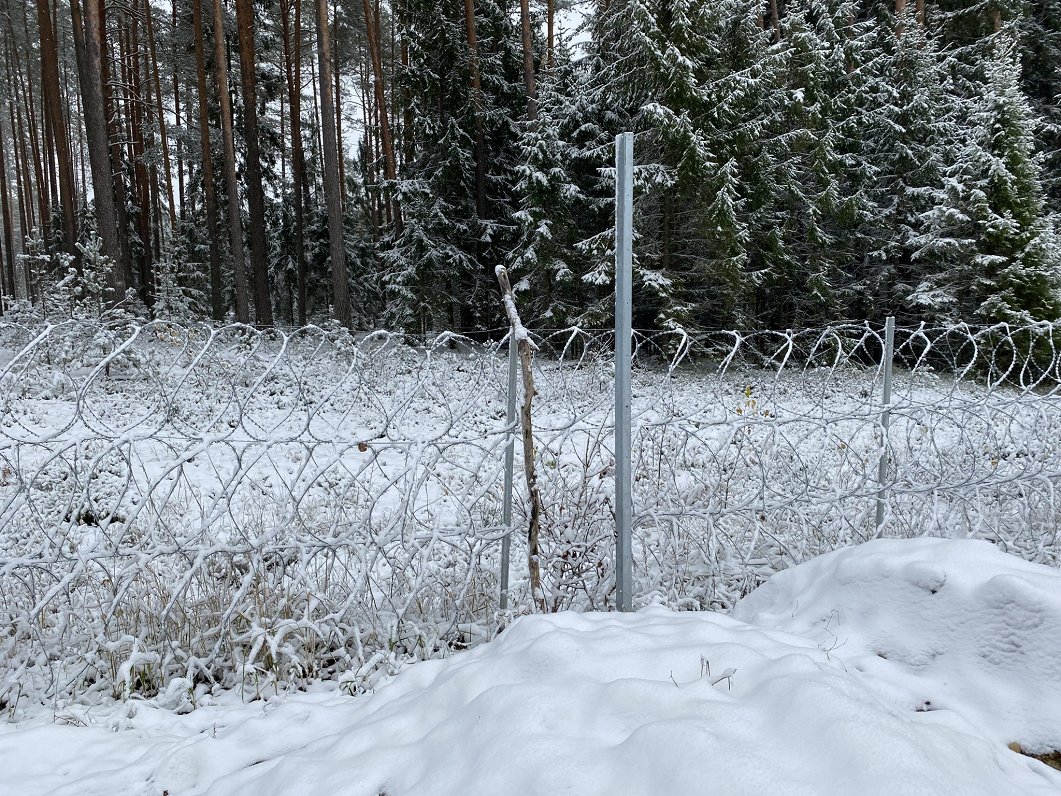
Starting out as a movement of volunteers in 2015, “I want to help refugees” (Gribu palīdzēt bēgļiem) actively helps and assists migrants that have come into difficulties. It has expanded into an organisation with close to 20 employees since the start of the Russian war in Ukraine in 2022 to help not only Ukrainian civilians but also other migrants. When the Belarusian authorities began to bring people to the EU borders in an organized manner and told them to walk in a certain direction, Raubiško and her fellow activists have started trying to show Latvian society what personal fates and emotional trauma lie behind the “illegal border crossings”.
The NGO initially successful called for donations right after the start of the irregular migration in August 2021. This allowed it to provide hot meals, clothes and first aid items to the first arrivals. “Yet, in general in Latvia there is no attempt to see them as humans. In the eye of the public they are usually just seen as objects and considered to be a threat to national security”, she said, saying that there are also ethnic, racial and religious prejudices against people from the Middle East and Africa. "We are against this dehumanization of people."
Together with her companions, Raubiško has called on the society to follow international law concerning these people. This was not always welcomed and met with approval: some have even accused the voluntary group of being instrumentalised as a tool in the Kremlin-backed hybrid attack orchestrated by the Belarus regime.
Controlled migration movement
Migrants have been encountered in various places in the border area – on roadsides, in forests, or walking across fields. Asked about how residents have reacted to the migration crisis, Šersts said that it brought the local community and border guards closer together. If residents notice a movement of migrants in the not very densely populated area, they pass on the information to the border guards but do not intervene themselves, according to him.
Šersts himself lives in Daugavpils – like many other border guards that drive every day to work, twice daily making the about 30-kilometre commute on a main road with hardly any traffic any more after the closure of the Silene border point.
The Latvian border officer has also noticed changes in the behaviour of Belarusian border guards. While some years the official contact was “very good” and the cooperation “on a very high level”, now there is hardly any communication or exchange of information at all. During border patrols there is “very, very little chance to meet somebody from the Belarus border guards or some other structures“, Šersts said, adding that even the dugout of the Belarusian border guards that is visible on the other side of the fence – a small hut made out of logs – seems not to be used anymore.
However, this does not mean that the Belarusian services are not engaged and active in the border area. According to Latvian border guards the migrants get instructions, equipment and assistance from Belarusian officials in their attempts to cross the border. Logs and branches have used when trying to break down the razor wire fence, and also at finished sections of the newly erected permanent barriers there have been taken efforts to damage and destroy the fence. The same has been reported from Poland and Lithuania.
“They used cutters and metal saws, but all the persons who we detected did not have anything with them. So, we think that they get some help from Belarus, because we did not find any equipment around the fence either”, Šersts said. Asked whether he has seen Belarus border guards pushing migrants towards the fence or using some kind of violence against them, Šersts answered: “Not on cameras and photos. And usually the possible persons who help them do not wear any uniform. They are just in dark clothes.“
From Belarus to Germany
Considering the pressure at the border a “hybrid threat” and “clearly planned action”, Igors Rajevs, the parliamentary secretary of the Ministry of the Interior, is more outspoken and gets straight to the point during a conversation in his office.
“What we see is that Belarusian border guards and the security service are constantly present in the area where those people are around the border. They are constantly monitoring them and they are controlling their current location and routes to get through the border“, he said, claiming that there is no spontaneity on the part of the migrants.
“It is done with the full assistance of the Belarusian border guards and under their supervision and control.” Neither the Belarusian Foreign Ministry nor the Belarusian border guard service did respond to a LSM request for comment on that.
But not only on the Belarusian side the migrants get help and assistance. Once they have made across the border into Latvia they usually wait in the forest, in hide-outs or at crossroads until people smugglers will pick them up to take them to Riga or directly to Germany.
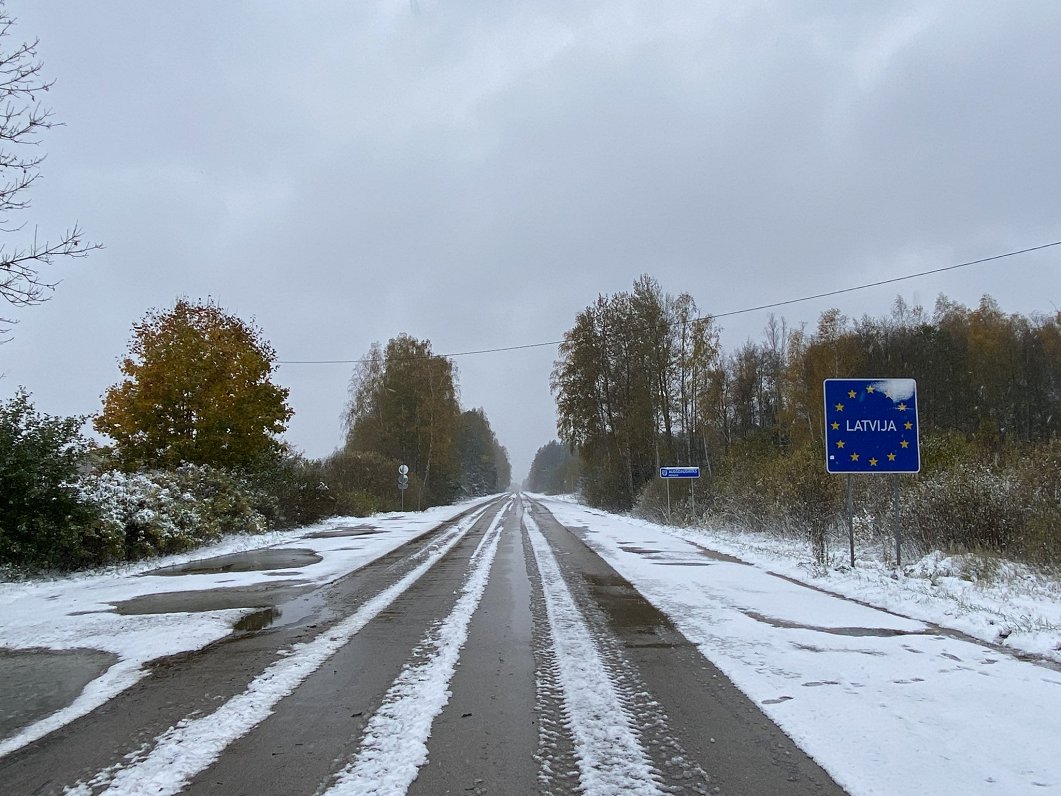
“This is our big problem right now, “ Šersts said. “A lot of facilitators are trying to get easy money and to illegally transport these persons further to Europe”. Each migrant usually pays a large sum for the voyage from his or her home country to the EU – and no one can organise that on their own. For most of them, however, their journey ends at the border or in a detention center.
Based on the border guards’ experiences most of the border crossers do not want to necessarily reach Latvia and stay there. Their intention is rather to travel on to countries in Western Europe and apply there for asylum once they have made it into the EU – with Germany being the main target destination for many of the migrants in search of a better and safer life. Some of them even think that they are already entering Germany when crossing the border, one Latvian border official told LSM, adding that the Belarusian side often misinformed the migrants who are completely surprised when they get to know where they have
ended up.
“They do not even know what Latvia is and where it is situated,“ he described his personal experiences from encounters with migrants at the border.
Latvia is trying to counter the trafficking problem with increased monitoring and patrols in the border area. “We are screening the area and we are making checkpoints to check suspicious cars, drivers and everything else in order to detect these facilitators,“ Šersts explained, adding that all kind of cars and nationalities are involved in operations along the Belarus-Latvia border to get third-country citizens into the EU. Measures involve random individual vehicle checks in the border area, where the police requires the driver to present papers and to provide a reason for being around there, as could be experienced first hand by LSM and a foreign journalist while driving on a gravel country road.
Latvians as drivers for illegal migrants
Šersts’ assessment is echoed by Jānis Sproģis. Together with his colleagues from the TV show “Aizliegtais Paņēmiens” (Forbidden Method) the investigative journalist of Latvian television went under cover for a daring probe on the topic and exposed internationally operating people smuggling rings that actively recruit drivers.
“The main surprise was how extensive and how ’popular’ is this so-called business next to the Latvian border“, he said about the results of their research entitled “A Dream of Germany“ (Sapnis par Vāciju). “We actually found out that around 20 groups operate in the border area.”
Responding to a suspicious advertisement placed on the contact messenger service Telegram, in which drivers were urgently sought, Sproģis and his colleagues got in contact with person smugglers that offered them 1,600 euros to pick up a group of migrants in the Latvian forest at the border and transport them to Germany – or more specifically: to the border bridge crossing into Frankfurt an der Oder. Another option is to bring people from the forest to some houses further away from the Latvian-Belarusian border. Payment in both cases would take place only after the work is completed, and in cryptocurrency.
People involved in the murky business as drivers are not only from Latvia but also from Lithuania, Poland and other countries. Often attracted by the tempting promised salary, they have become part of a highly profitable criminal network involved in illegally transporting migrants from the Belarusian-Latvian border to Germany.
Another route is the so-called Balkan way, where individuals from the Baltics transport illegal migrants to Germany, as an investigation by Re:Baltica in collaboration with colleagues from Lithuania and Hungary found out.
The illegal housing and transportation of migrants has shown an alarming trend and has become a significant problem. Given the increasing involvement of Latvian nationals in such unlawful activities in other European countries, the Ministry of Foreign Affairs has already warned against accepting suspicious driver job offers.
The Latvian government has also introduced tougher sanctions for assisting illegal movements across the border and within the country. It is now a criminal offense resulting in arrest and prosecution.
Sproģis is skeptical about whether the changes might bring the desired results as so far usually only the drivers have been caught while the organizers of the illegal transportation of migrants escape unscathed.
“We actually managed to find out and give the information to police to deter and detain around 30 people. But it is like a pebble in the sea”, he said, indicating that due to the current turning back policy it is hardly possible to get the big guys running the operations, while the migrants will continue their attempts to cross the border in the hope to be able to continue to Germany and apply for asylum.
“It is like in the saying: if you cut one head of the Hydra, three more will come.”
More security and protection
Securing the land border with a permanent fence is supposed to deter both migrants and people smugglers. Latvian officials underline that the barrier is not meant to be a new Iron Curtain but is intended to make it easier for border guards to monitor the frontier.
“The fence is not like a stone wall. Of course, it will not protect 100% from illegal border crossing, but the fence will give us time to react, “ Šersts said, standing next to the physical obstacle that in some sections will have migration gates for wild animals. “It makes us feel secure. This fence helps us to protect the border.“
Asked what she thinks about the construction of the border fence, the refugee advocate Raubiško answered that she also expects it to reduce the number of crossings. “I think there will be less. It will be much harder to cross the border, but that will not stop the attempts to cross. The fence will make it more difficult and more deadly, but I do not think that any wall will stop the movement. People will try it anyway“, she said, adding that the migrant flow might be less because it will be known that the border has been reinforced.
This is also what the Ministry of Interior is counting on. But parliamentary secretary Rajevs – a former deputy Chief of Staff of the Latvian armed forces – is at the same considering the fence “just one of the measures” that will give the border guards some time to react and get on the place in time. “Basically, it is a constant competition between those who want to violate the border and the border guards who want to catch them“, he told LSM, predicting that the situation at the border is not going away and the Belarusian-backed illegal
migration will continue. "The tactics are always changing. They are adapting all the time.”
